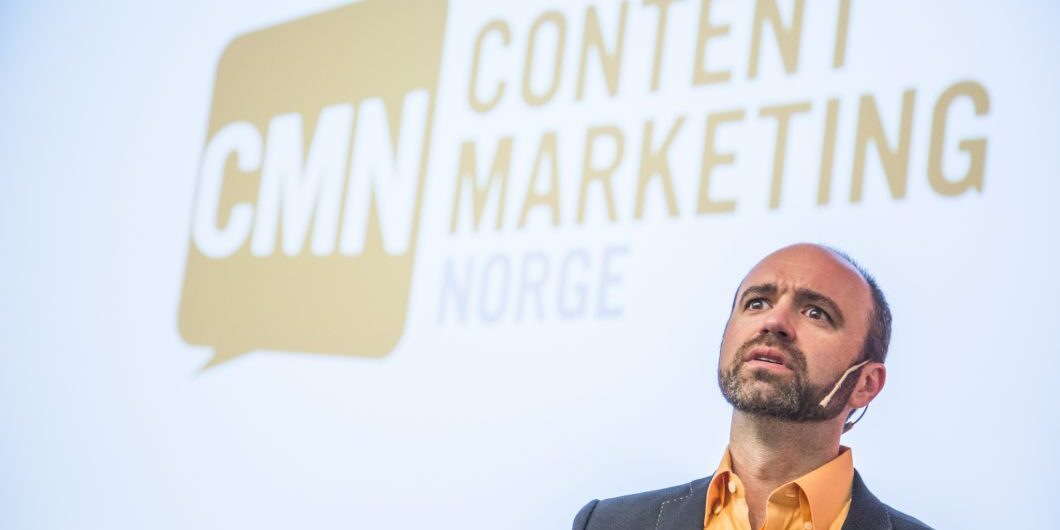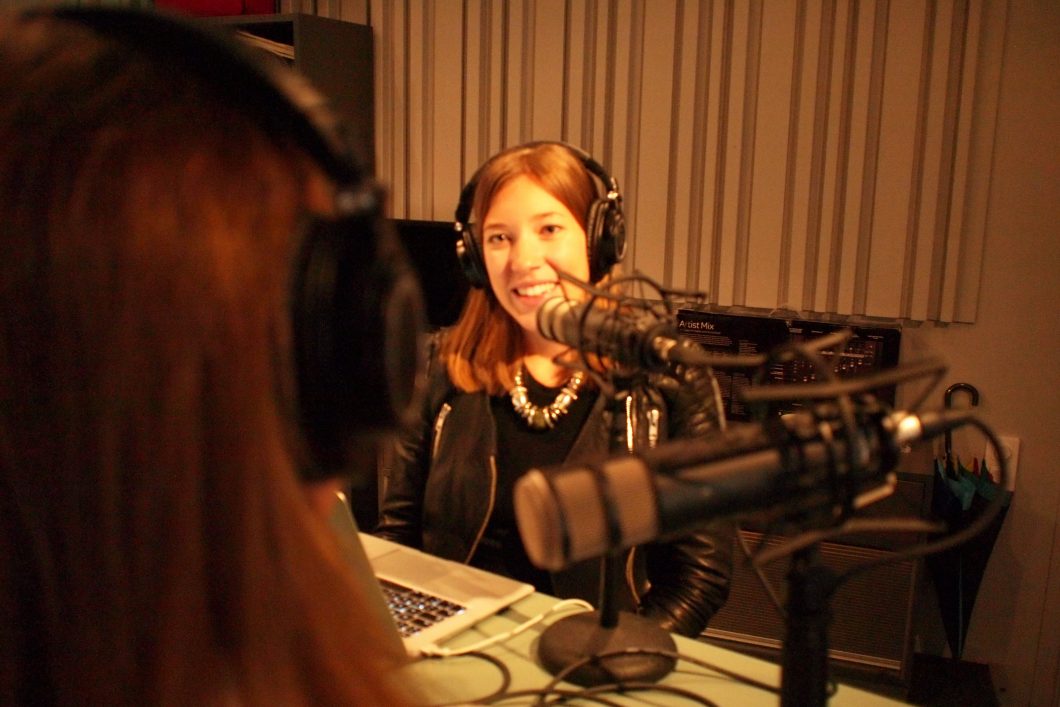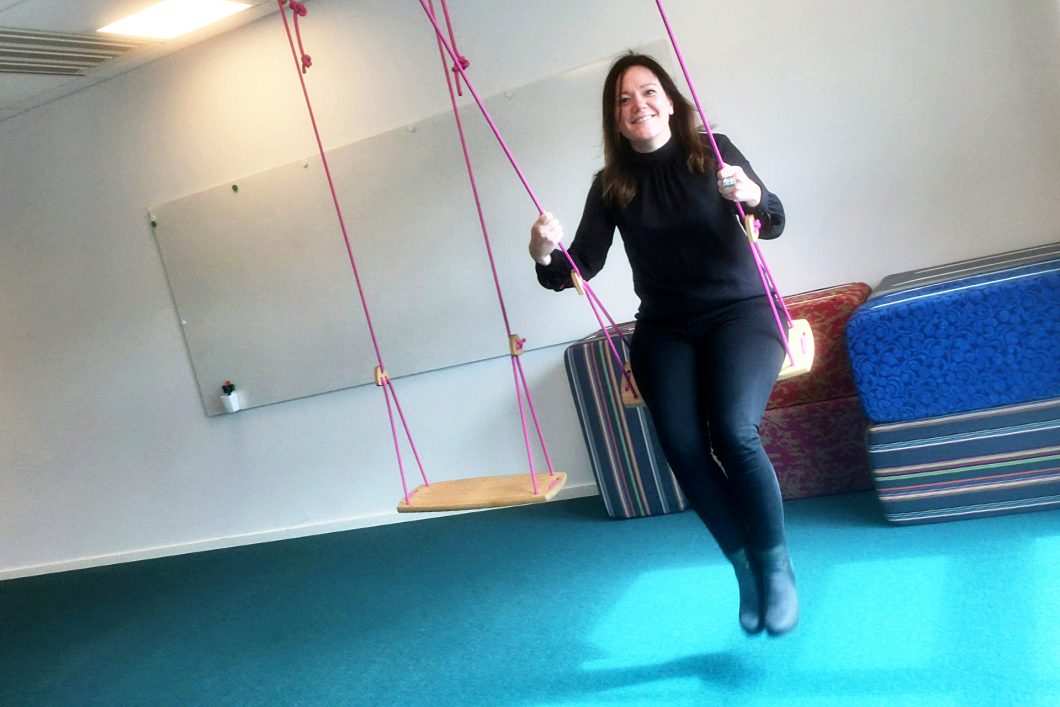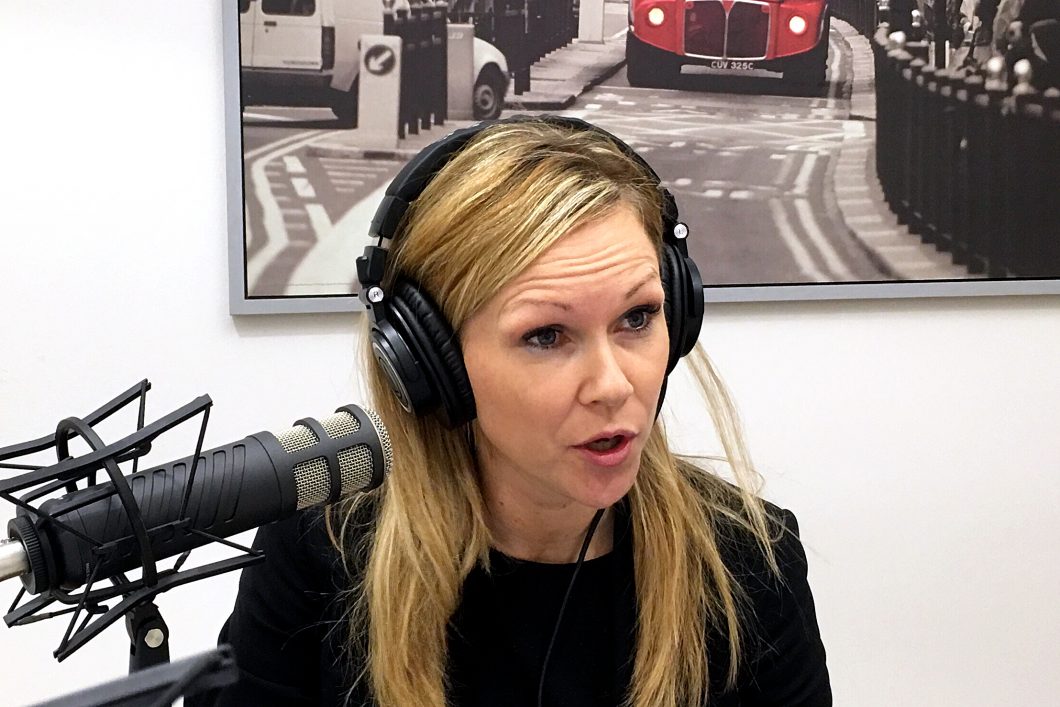Mellan september 2015 och juli 2016 sändes fyrtio avsnitt av podden Åsikt – en krönika av och med Thomas Barregren. Detta är en återutsändning av avsnitt 36 från den 24 maj 2016.
”Joe Pulizzi om skillnaden mellan content och content marketing”, handlar Åsikt 36 från den 24 maj 2016.
[Inledande vinjett]
Hoppsan…
Joe: Do we run out of time?
Thomas: I’ve forgot to record.
Joe: Are you kidding me?!
Thomas: I’m so sorry.
Joe: Oh no!
Thomas: I’m so sorry.
Joe: I got only five minutes.
Thomas: Five minutes?
Joe: That was good stuff!!
Thomas: I’m so sorry.
[Vinjett]
Joe: Let’s do your critical question in five minutes, so you have some chunk to go with, and then I have to do this interview for…
That’s okay! We will bring it around.
Thomas: Jesus, this is not happening…
Joe: It has happen me too. I’ve done it before. We got halfway through our podcast and have to start over. It was horrible.
Are we recording now?
Thomas: Now we are recording, yes.
Joe: We are for sure recording?
Thomas: We are recording now.
Joe: Okay.
Skillnaden mellan content och content marketing
Thomas: In your presentation you said that nine of ten companies self-report that they are doing content marketing. But I sense an undertone that you don’t really trust them on that.
Joe: That’s total correct. I think that most people that say they are doing content marketing are just creating content. They are putting it on all sorts of different platforms, and there is no strategy or business model behind that.
So, we call it the approach of content marketing. So that really means, that are goal is to create valuable, relevant, consistent content on a ongoing basis, in order to see some behavior change to a very target audience.
So there is a couple of tings in there. A very specific audience. It has to be valuable content, and not about our products. And we have to do it consistently. It just like a medium company would do, except for that we are not getting advertising revenue or paid subscriptions like a media company would. We are actually try to sell more products and services, help close the business faster, create more successful customers in some way, so they ultimately do more profitable things for the business.
I would say there is very few people out there doing it. And if you look at our success rate in the research of 30 percentage, that is probably more accurate. It might even be lower than that. That [is] companies that are actually doing content marketing are seeing success. Because you got all kinds of companies out there that has no strategy, they are not targeting a specific audience, they are still talking about their products and services too much. They are all over the place on social media and are not building their own platform where they can earn attention over time. They are not building an email subscription list. So they are doing all this content. There is lot of activity. But all that activity [is] at the end of day [all] what you have.
The approach of content marketing, and a business model behind that, would mean that you have an audience that is opt-in to your communication. That is you have earn their trust – they know they can trust you – and they are more willing to buy from you. And that’s what we like to see.
There is definitely not 90 percentage of companies doing that. Probably less than half are doing it. You have lot of experimentation.
Even though content marketing is a very old discipline, it’s new to most people. I think if you come from a publishing environment, you get this. If you are a marketer, and you’ve been doing advertising for 50 years, this is a very new model.
The old model is campaign based. The new model is a marathon, and not a sprint. We need to focus and solve our customers communications challenges on a ongoing basis; giving them amazing experience so that they trust us, and then we can monetize that once we give them enough value.
Varför content marketing sker i ägda medier
Thomas: In Sweden a lot of discussion have been about whether or not you have to own the medium you are putting he content on. Many say you don’t have to do that. You can do native advertising and call it content marketing. Do agree or disagree?
Joe: Native advertising is advertising. We are still… I’m not saying interrupting. We are telling stories that are more compelling, hopefully, than [traditional] advertising, but we are still renting somebody else’s space.
So if we are going to do native advertising – which I don’t have a problem with – at the end there has to be some kind of result. Are we trying to steal audience, and get them go to our site? Maybe. That’s hopefully what we try to do, for at the end of day we got to have some subscriber – we are trying to build an audience in some way.
Same thing if we look at social media platforms of some kind. We are renting other peoples platforms. So we have to wake up everyday and knowing – whether we are using native adversing or whether we are using YouTube or Facebook – those things are temporary. We don’t have control over those things. So what’s our goal and call to actions, so that we at the end of day have an audience that does know, like and trust us, so we can monetize?
Even great advertising is done consistently over time. The problem is that most advertising program stop at some point – 9 months, 12 months, whatever – and then we start a new campaign, which is horrible to do. No media company would ever do that.
So, if we can deliver value over a long period of time – if you are looking at any media company or any content marketing case study – if we do that, and they know, like and trust us, we have created a better customer. We see more positive behavior. So whether you call it advertising or communication, that’s the basis of it. Whatever platform you are using or what you do, all of I want to make sure of is at the end of day you are saying that this content is valuable.
You can’t build an asset out of content, I don’t believe. I think the asset comes from building the audience. The content is a conduit to get to the audience and earn that trust and communications.
Berätta vad du tycker om Åsikt
[Avslutande vinjett]
Berätta vad du tycker om Åsikt. Vad gillar du? Vad kan göras bättre? Skicka ett mejl till thomas (med th) snabel‑a kntnt.se.
Musik: All Alone © Ivan Chew (CC BY 3.0)
Bilden överst på sidan © Esben Johansen.
Dela artikeln om du gillade den!
Liknande artiklar
Förslag på mer läsning
Miljö- och hållbarhetpåståenden i din marknadsföring
Medvetna konsumenter lockar till miljö- och hållbarhetspåståenden i företagens marknadsföring. Men kraven på vad som får sägas inom detta område är extra hårda. Ta reda på vad som gäller. Läs denna artikel i Kntnt Magasin skriven av advokat Erik Ullberg och biträdande jurist Richard Fürst på Wistrand advokatbyrå.
Läs artikel »Content marketing v/s redaktionell kommunikation – sex krav du skall ställa på din contentbyrå
Står du i begrepp att ta hjälp av en byrå i din content marketing? Då har du säkert upptäckt att var och varannan byrå i kommunikationsbranschen numera påstår sig vara experter på ämnet. Begreppet används flitigt av många, vilket gör det svårare för dig som köpare att veta vem eller vilka du ska vända dig till. I denna artikel hjälper Lars Wirtén dig på traven!
Läs artikel »Så skyddar du företagets hemligheter och viktiga kundrelationer
Den höga rörligheten på arbetsmarknaden leder till att många byter jobb. För att hindra att företagshemligheter och viktiga kundrelationer följer med till konkurrenten behöver arbetsgivaren känna till juridiken. Om detta handlar dagens artikel författad av advokat Gustav Sandberg och biträdande jurist Viktoria Hybbinette på Wistrand Advokatbyrå.
Läs artikel »Så får du kontroll på arbetsflödet i din content marketing – del 2
Spar på tid och krafter – effektivisera arbetsflödet i din content marketing! Lars Wirtén och Jörgen Olsson – två erfarna journalister, redaktörer och seniora skribenter, delar med sig av sina bästa tips i två artiklar i Kntnt Magasin. Detta är en andra. Trevlig läsning!
Läs artikel »Vad är artificiell intelligens?
Funderar du på vad AI är och hur du skall förhålla dig till den revolution inom området som vi med säkerhet bara sett början på? Detta är något som vår krönikör Martin Modigh Karlsson ägnar mycket tankemöda. Läs hans intressanta analys i dagens artikel.
Läs artikel »Så får du koll på arbetsflödet i din content marketing – del 1
Effektivisera arbetsflödet i din content marketing. Det finns flera anledningar. Inte minst spar du tid. Lars Wirtén och Jörgen Olsson – två erfarna journalister, redaktörer och seniora skribenter, delar med sig av sina bästa tips i två artiklar. Den första hittar du här!
Läs artikel »Personuppgifter på vift – Vad är ditt ansvar?
Då och då händer det att ett företag förlorar kontrollen över sina kunders personuppgifter. Det är naturligtvis inte bra och får konsekvenser. I denna artikel förklarar advokat Erik Ullberg och biträdande jurist Richard Fürst på Wistrands Advokatbyrå vad en personuppgiftsincident är och vad du måste göra när en sådan har inträffat. Läs och lär!
Läs artikel »Så SEO-optimerar du webbplatsen för röstsök
2020 kommer 50% av alla sökningar ske med rösten visar studie och Googles ”voice search”-tjänst växer så det knakar. Detta gör att du bör SEO-optimera din webbplats för röstsökningar redan nu. I dagens gästkrönika förklarar Alexandra Jung hur du gör!
Läs artikel »Inbound marketing sneglar mot content marketing
I denna gästkrönika reflekterar Niloo Lopez över vart inbound marketing är på väg efter att ha besökt megakonferensen Inbound 2019.
Läs artikel »Överraskande slutsats från INBOUND 2019
Kntnt Radio är tillbaka! I avsnitt 209 diskuterar Pia Tegborg, Thomas Barregren och Niloo Loopez utifrån Niloos ”take aways” från 2019 års upplaga av megakonferensen INBOUND. Samtalet landar i en oväntad konklusion. Pia och Thomas ger också en förklaring till den långvariga tystnaden. Efter 208 avsnitt under nästan lika många veckor blev det helt plötsligt tyst. Vad hände?
Läs artikel »





















